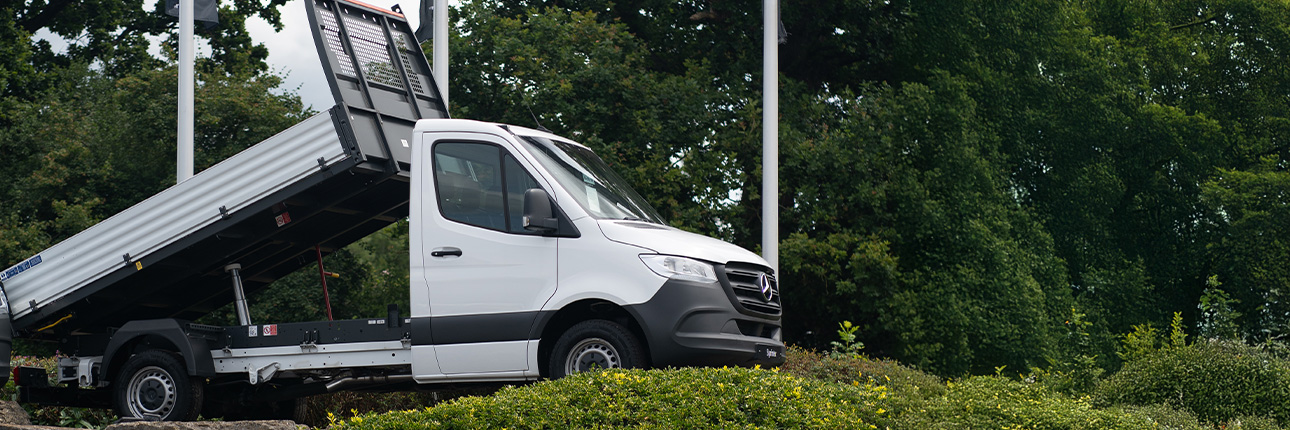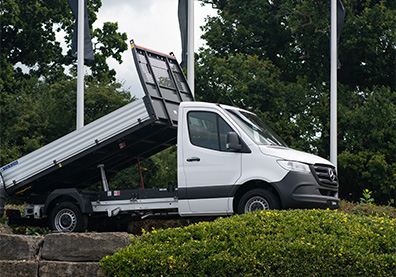We use cookies to make your experience better. To comply with the new e-Privacy directive, we need to ask for your consent to set the cookies. Learn more.


Tipper Vans vs Dropside Vans
When it comes to choosing the right commercial vehicle for your business, the decision often boils down to the specific needs of your operations. Two popular options are tipper vans and dropside vans. Both have their unique advantages and are designed to handle different types of tasks. Let’s dive into the key differences and benefits of each to help you make an informed decision.
The popular Mercedes-Benz Sprinter comes in both tipper and dropside.
What is a Tipper Van?
A tipper van is a light commercial vehicle equipped with a hydraulic mechanism that allows the rear flatbed to be tilted, making it easy to unload loose materials like soil, gravel, or construction debris. This feature is particularly useful in industries such as construction, waste management, and landscaping, where quick and efficient unloading of materials is essential.
Advantages of Tipper Vans
Efficient Unloading
The hydraulic tipping mechanism allows for quick unloading of loose materials.
Versatility
Ideal for transporting a variety of materials, including heavy items.
Time-Saving
Reduces the time and labour required for unloading, increasing overall productivity.
What is a Dropside Van?
A dropside van features an open flatbed with sides that can be dropped down to provide easy access for loading and unloading. This design is particularly beneficial for transporting items that need to be loaded by hand or with a forklift, such as scaffolding, bricks, and other construction materials.
Advantages of Dropside Vans
Easy Access
The drop-down sides allow for easy loading and unloading from all sides of the vehicle.
Higher Payload
Generally, dropside vans can carry heavier loads compared to tipper vans.
Versatility
Suitable for a wide range of industries, including construction, landscaping, and delivery services.
Key Differences between Tipper and Dropside Vans
Loading and Unloading
Tipper Vans: Best for loose materials that can be tipped out quickly.
Dropside Vans: Ideal for items that need to be manually loaded or unloaded, offering easy access from all sides.
Payload Capacity
Tipper Vans: Typically have a lower payload capacity due to the hydraulic mechanism.
Dropside Vans: Often have a higher payload capacity, making them suitable for heavier loads3.
Versatility
Tipper Vans: More suited for specific tasks like transporting loose materials.
Dropside Vans: More versatile, suitable for a variety of tasks and industries.
Cost
Tipper Vans: Generally more expensive due to the hydraulic tipping mechanism.
Dropside Vans: Usually more affordable and offer a higher payload capacity for the price.
Which one should you choose?
The choice between a tipper van and a dropside van ultimately depends on your business needs. If your operations involve frequent transportation of loose materials and you need quick unloading, a tipper van is the way to go. On the other hand, if you require a vehicle with easy access for manual loading and a higher payload capacity, a dropside van would be more suitable.
Both types of vans offer unique benefits and can significantly enhance the efficiency of your business operations. Consider the specific requirements of your tasks and choose the van that best meets your needs.
